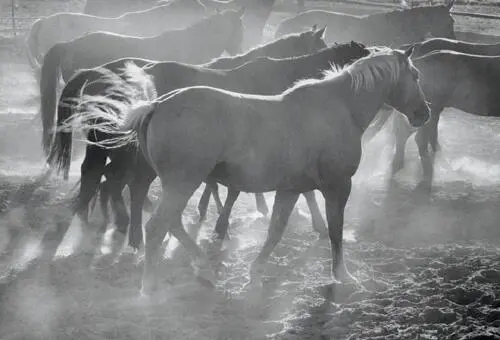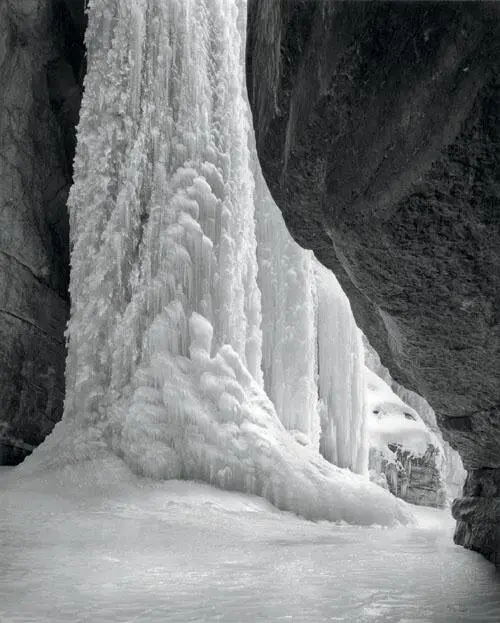Bruce Barnbaum - The Art of Photography - An Approach to Personal Expression
Здесь есть возможность читать онлайн «Bruce Barnbaum - The Art of Photography - An Approach to Personal Expression» весь текст электронной книги совершенно бесплатно (целиком полную версию без сокращений). В некоторых случаях можно слушать аудио, скачать через торрент в формате fb2 и присутствует краткое содержание. Жанр: Старинная литература, на английском языке. Описание произведения, (предисловие) а так же отзывы посетителей доступны на портале библиотеки ЛибКат.
- Название:The Art of Photography: An Approach to Personal Expression
- Автор:
- Жанр:
- Год:неизвестен
- ISBN:нет данных
- Рейтинг книги:5 / 5. Голосов: 1
-
Избранное:Добавить в избранное
- Отзывы:
-
Ваша оценка:
- 100
- 1
- 2
- 3
- 4
- 5
The Art of Photography: An Approach to Personal Expression: краткое содержание, описание и аннотация
Предлагаем к чтению аннотацию, описание, краткое содержание или предисловие (зависит от того, что написал сам автор книги «The Art of Photography: An Approach to Personal Expression»). Если вы не нашли необходимую информацию о книге — напишите в комментариях, мы постараемся отыскать её.
The Art of Photography: An Approach to Personal Expression — читать онлайн бесплатно полную книгу (весь текст) целиком
Ниже представлен текст книги, разбитый по страницам. Система сохранения места последней прочитанной страницы, позволяет с удобством читать онлайн бесплатно книгу «The Art of Photography: An Approach to Personal Expression», без необходимости каждый раз заново искать на чём Вы остановились. Поставьте закладку, и сможете в любой момент перейти на страницу, на которой закончили чтение.
Интервал:
Закладка:

Morgan Yazee is a Navajo rancher and show horse producer. I visited his ranch in 2003. Using a handheld medium format camera (Mamiya 645), standing on the second rail of the corral fence and propping my elbows on the top rail for stability, I followed the horses around the corral, making this exposure when they briefly stopped, lining up almost like a chorus line of dancers. Using a relatively fast film—Ilford HP5, rated by Ilford at ASA 400, but at ASA 300 by me—I was able to make the photograph at 1/60 second, placing the shadowed side of the horses just above Zone 5.
Figure 8-4. Morgan Yazee’s Corral
Chapter 9. The Black-and-White Negative and Contrast Control—The Extended Zone System
ANSEL ADAMS ONCE LIKENED PHOTOGRAPHY TO MUSIC with his famous analogy, “The negative is the score; the print is the performance”. The composer creates the score, including everything he or she wants; then a performer interprets the score as he or she sees fit. In photography, you are both the composer and performer. This chapter gives you the tools to make the score far richer than you may have imagined possible. Chapter 10 extends that thinking into the realm of the performance.
Chapter 9 Overview
Chapter 8 deals with proper exposure of the negative; this chapter deals with developing it to the level of contrast you want, thus giving you immense control over your imagery.
The zone system can be used not only for placing an object into any desired tonality, but also for changing contrast between objects. Since there is more than one object (or tonality) in any photograph, the moment you place one of them at the density you desire, the others automatically land as far away in density as the light meter shows. That may be either too close in density to the first object or too far away. There is no assurance that exposing one object at the appropriate density places the others at a desirable density for printing purposes. You may wish to have the other objects brighter or darker. In other words, you may wish to alter the level of contrast between the objects.

Maligne Canyon (pronounced Ma-leen) in Jasper National Park is inaccessible in the spring, summer, and autumn, as a powerful river scours the deeply cut limestone chasm. But in winter the river freezes, allowing access. At one location within the 180-foot deep canyon an underground seep hits the canyon wall just below the rim. As water runs down the inner canyon wall, it freezes, creating the enormous natural ice sculpture known as the Queen of Maligne.
Figure 9-1. The Queen of Maligne
By varying the length of time for negative development, contrast can be increased or decreased in the black-and-white negative. Lower zones of the negative (the thinnest or least dense portions, which become the darker portions of the print) develop fully within a few minutes, then change very little with extended development times. This tells you that the low zones (often referred to as the “shadow areas” of the scene) are determined almost exclusively by negative exposure, with little change occurring as a result of negative development .
The middle zones (roughly Zones 4, 5, 6, and 7) can be significantly altered by changes in negative development times, with each zone affected more than the previous zone. The higher zones (generally Zone 8 and higher) are greatly affected by changes in negative development times. The higher an object is placed on the zone scale at the time of exposure, the more it can be altered by changes in negative development .
This tells you how to “read” a negative. If your shadow areas show good density—appropriately low, with good separations between them—then your exposure was good. This is true because negative development has little effect on shadow areas; if they look good, it tells you that their exposure was on target. Low density areas are almost purely determined by your initial exposure. Once you have those densities nailed down, look at your highlights. If your highlight densities are good, then your negative development is good. This is true because altering negative development has such a great effect on the higher zones.
If your shadow areas are too thin or nonexistent, simply increase your exposure . Don’t think about changing your development time because it will have little or no effect on the low zones. Once you get sufficient exposure for the shadow areas to have good density separations, then look at the highlights. If they are too dense, reduce your development time; if they are too thin, increase your development time. But don’t change your exposure to compensate for the changes in development time because development changes do not materially affect the low zones.
The full range of the negative—Zone 0 to Zone 16–18—can then be put to use. This chapter is divided into three sections, beginning with an explanation of what happens to the negative when it is developed. The second section has examples of how to use that information for creative purposes. The last section examines the general characteristics of negative materials and developers, and the specifics of processing to make full use of the negative a reality.
Film’s range is astonishing, and the creative potential inherent in fully using the “extended zone system” is immense. As in the case of the zone system for film exposure, the underlying concepts are simple. The approach here is nontechnical; though graphs are used in the explanation, they do not require mathematical sophistication on the part of the reader.
The Negative During Development
As explained in Chapter 8, every part of a negative is sensitized to the amount of light that fell on it during the exposure. This sensitized negative is known as the latent image. At the time of exposure, the negative gains a potential for density, but no actual density. Only during development does it gain density.
When the exposed negative is put into the developer, all of its parts begin to develop—i.e., to grow denser than the unexposed film base—in proportion to the degree of sensitization. The areas sensitized to the greatest extent build density at a rapid rate; those sensitized to a lesser extent build density at a slower rate. Those areas sensitized to the lowest level, Zone 1, gain density rapidly and are completely developed in a minute or two. Additional development time has no appreciable effect on Zone 1—except that extended development tends to progressively fog, or darken, the film base itself, making Zone 1 denser along with an equal density increase in all zones.
Areas sensitized above Zone 1 continue to grow in density as development continues. Once areas sensitized to Zone 2 reach that density, they gain slightly greater density with continued development—but they won’t even reach Zone 2½ without excessively long development times. Once areas sensitized to Zone 3 gain that density, they can be developed nearly up to Zone 4 with increased development times. Areas sensitized to Zone 4 can be pushed beyond Zone 5 in density with extended development times.
The amount of development time needed for each zone to reach its proper density is known as the “normal development” time. How do you determine “normal development time”? By finding out how long it takes to develop any exposed zone to that exact density. For example, normal development time is the time required to develop an area placed at Zone 5 (the gray meter reading) to Zone 5 density. At the start of development, the exposed (i.e., sensitized) Zone 5 area has no density, but as development proceeds, density increases. It quickly exceeds Zone 1, and then surpasses Zones 2, 3, and 4 before finally achieving Zone 5 density. That’s “normal development time” (for that combination of film and developer). If development continues beyond that point, the density will exceed Zone 6 and ultimately reach Zone 7.
Читать дальшеИнтервал:
Закладка:
Похожие книги на «The Art of Photography: An Approach to Personal Expression»
Представляем Вашему вниманию похожие книги на «The Art of Photography: An Approach to Personal Expression» списком для выбора. Мы отобрали схожую по названию и смыслу литературу в надежде предоставить читателям больше вариантов отыскать новые, интересные, ещё непрочитанные произведения.
Обсуждение, отзывы о книге «The Art of Photography: An Approach to Personal Expression» и просто собственные мнения читателей. Оставьте ваши комментарии, напишите, что Вы думаете о произведении, его смысле или главных героях. Укажите что конкретно понравилось, а что нет, и почему Вы так считаете.












